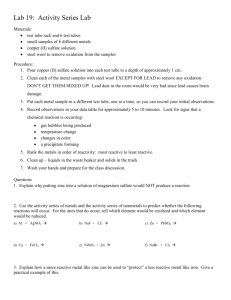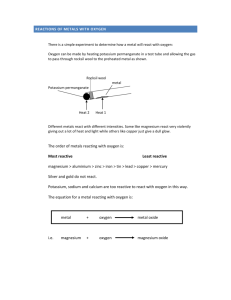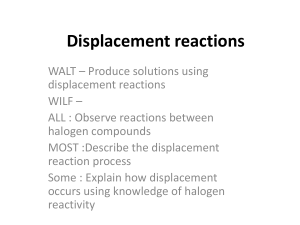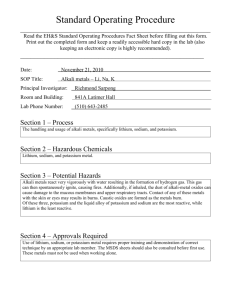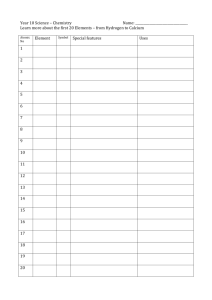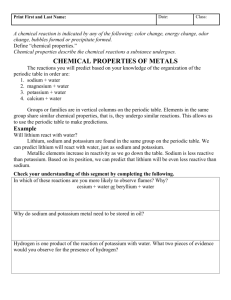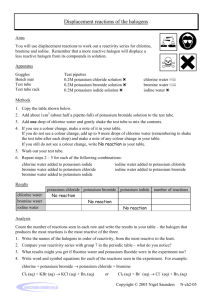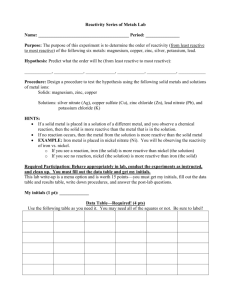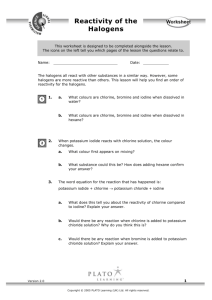File
advertisement
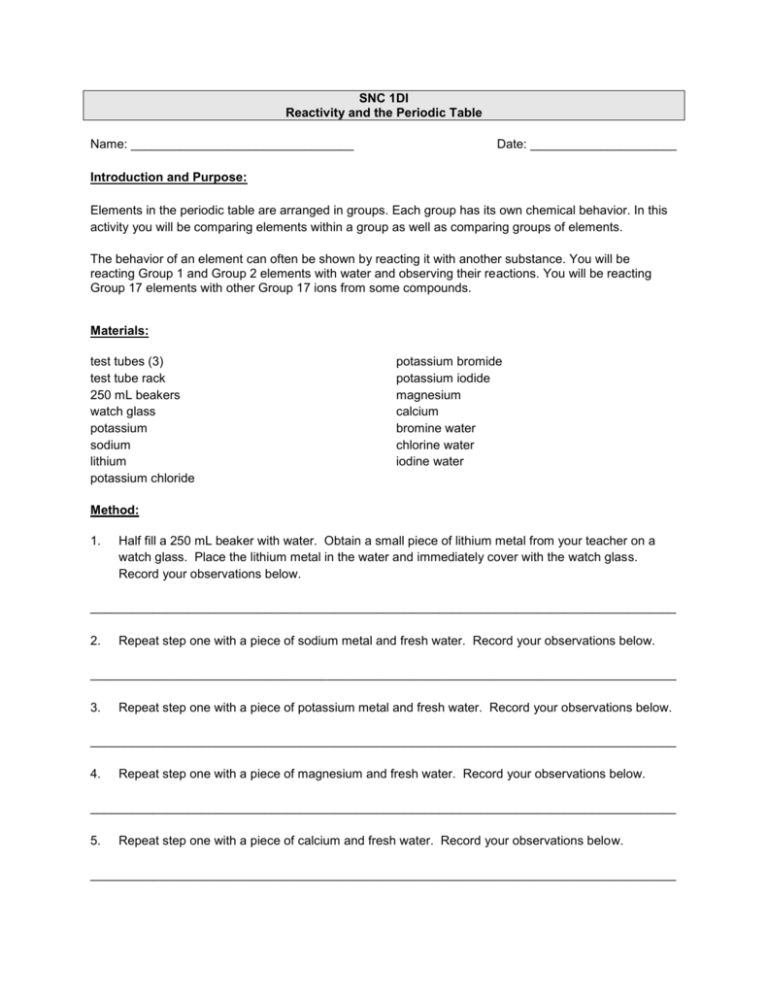
SNC 1DI Reactivity and the Periodic Table Name: ________________________________ Date: _____________________ Introduction and Purpose: Elements in the periodic table are arranged in groups. Each group has its own chemical behavior. In this activity you will be comparing elements within a group as well as comparing groups of elements. The behavior of an element can often be shown by reacting it with another substance. You will be reacting Group 1 and Group 2 elements with water and observing their reactions. You will be reacting Group 17 elements with other Group 17 ions from some compounds. Materials: test tubes (3) test tube rack 250 mL beakers watch glass potassium sodium lithium potassium chloride potassium bromide potassium iodide magnesium calcium bromine water chlorine water iodine water Method: 1. Half fill a 250 mL beaker with water. Obtain a small piece of lithium metal from your teacher on a watch glass. Place the lithium metal in the water and immediately cover with the watch glass. Record your observations below. ____________________________________________________________________________________ 2. Repeat step one with a piece of sodium metal and fresh water. Record your observations below. ____________________________________________________________________________________ 3. Repeat step one with a piece of potassium metal and fresh water. Record your observations below. ____________________________________________________________________________________ 4. Repeat step one with a piece of magnesium and fresh water. Record your observations below. ____________________________________________________________________________________ 5. Repeat step one with a piece of calcium and fresh water. Record your observations below. ____________________________________________________________________________________ 6. a. Number three test tubes 1, 2, and 3. b. Place a few drops of potassium chloride in test tube 1, potassium bromide in test tube 2, and potassium iodide in test tube 3. c. Add a few drops of chlorine water (non-metal) to each test tube and observe any color changes. ____________________________________________________________________________________ 7. Repeat step 6 using bromine water (non-metal). ____________________________________________________________________________________ 8. Repeat step 6 using iodine water (non-metal). ----------------------------------------------------------------------------------------------------------------------------- --------------Questions and Conclusions: 1. Arrange Li, Na, and K in order of the least reactive to the most reactive. ____________________________________________________________________________________ 2. If this list could be extended to include all of the other elements in Group 1, what would be the order from most reactive to least reactive? ____________________________________________________________________________________ 3. Compare your results for K and Ca, and Na and Mg. Is Group 1 or Group 2 more reactive? ____________________________________________________________________________________ 4. Which metal is the most reactive metal listed in the periodic table? ___________________________ 5. For steps 6-8 a non-metal is reactive if it can cause a colour change when mixed with a compound of another non-metal. List in order the non-metals (chlorine, bromine, iodine) from the least reactive to the most reactive. ____________________________________________________________________________________ 6. If this list could be extended to include all of the other elements in Group 17, what would be the order from most reactive to least reactive? ____________________________________________________________________________________ 7. Which non-metal is the most reactive in the periodic table? ________________________________

